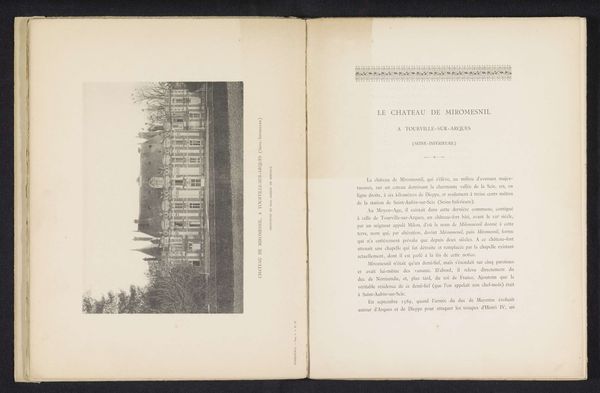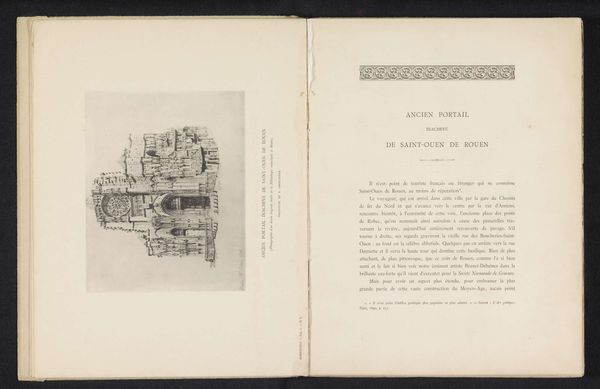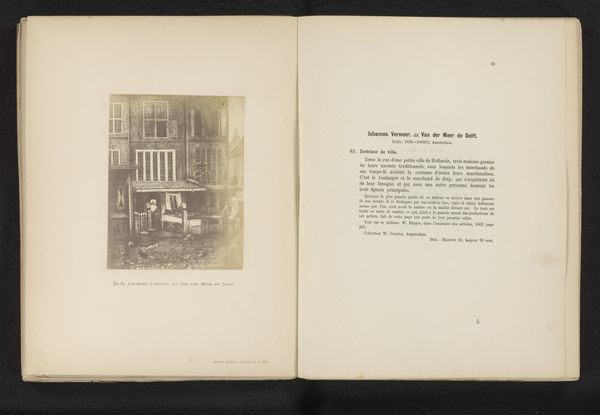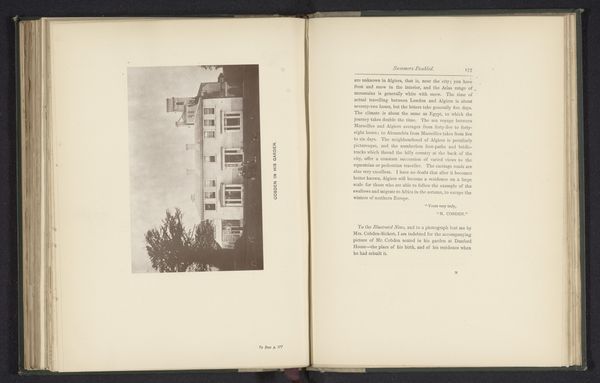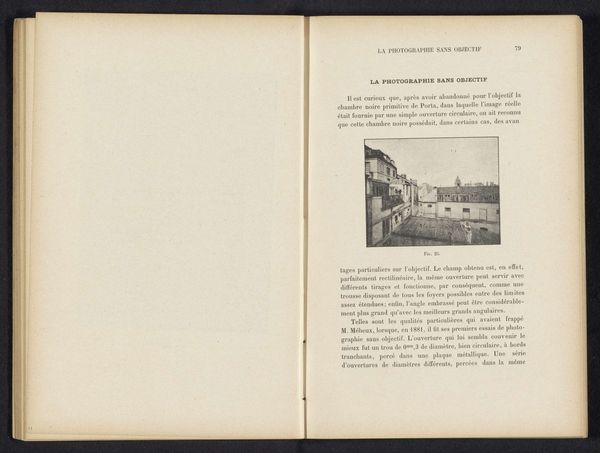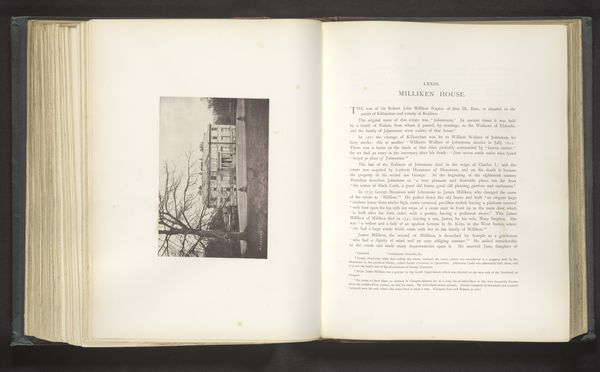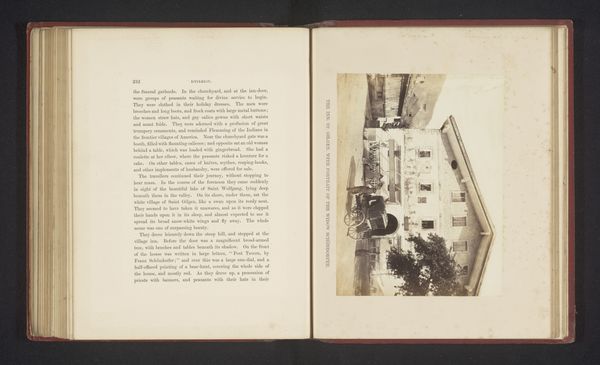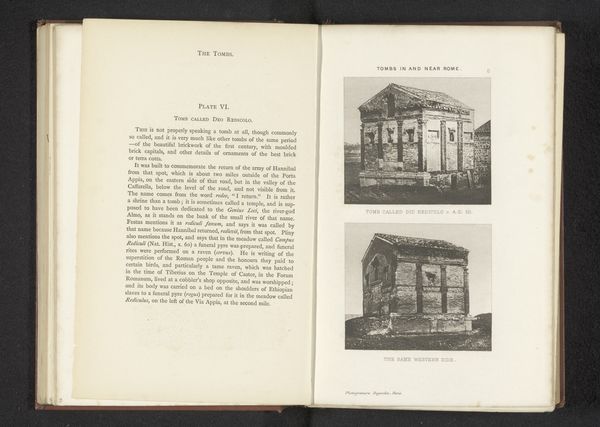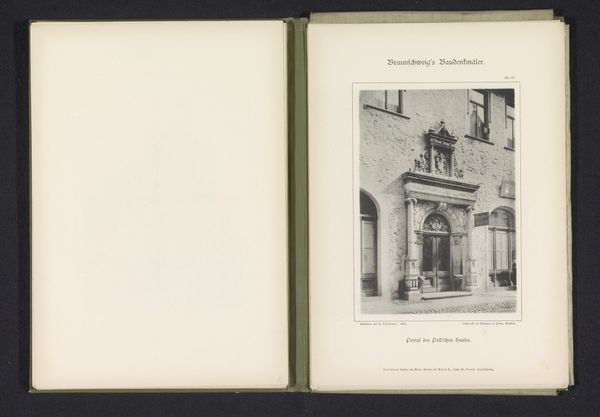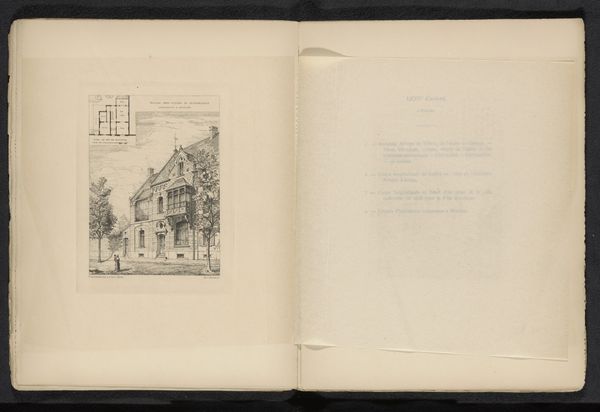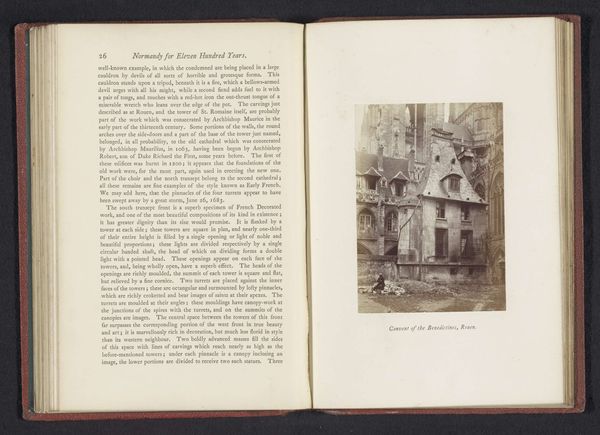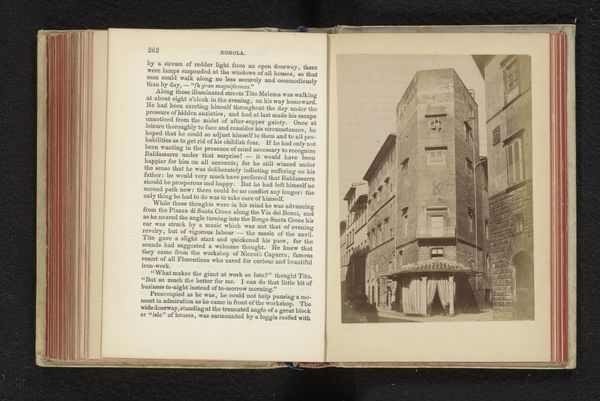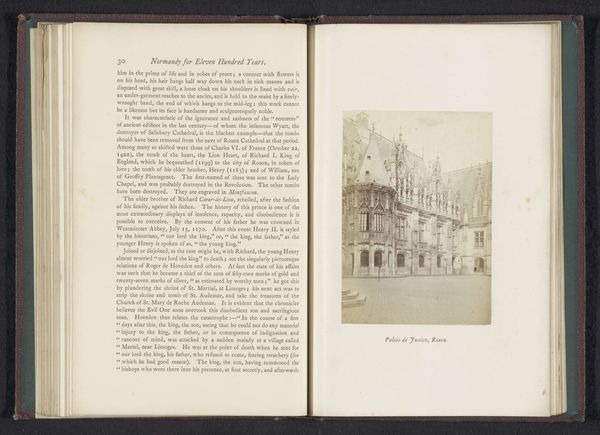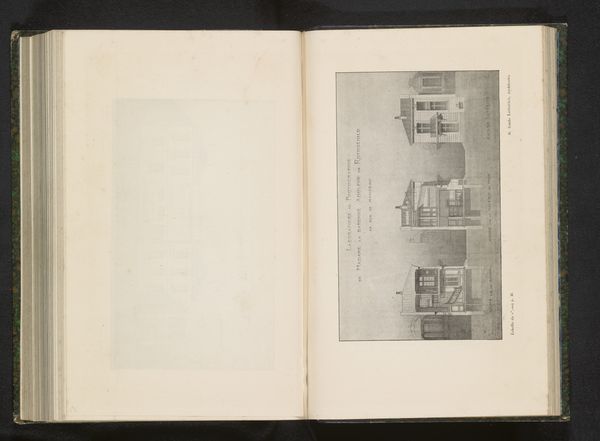
Fotoreproductie van een tekening, voorstellende een exterieur van een woonhuis aan de Rue Damiette 29 te Rouen before 1895
0:00
0:00
print, etching, photography
#
script typeface
#
aged paper
#
script typography
# print
#
etching
#
old engraving style
#
hand drawn type
#
landscape
#
photography
#
personal sketchbook
#
hand-drawn typeface
#
thick font
#
cityscape
#
handwritten font
#
realism
#
historical font
#
building
Dimensions: height 196 mm, width 125 mm
Copyright: Rijks Museum: Open Domain
Curator: Before us, we have a fascinating print. It’s cataloged as "Fotoreproductie van een tekening, voorstellende een exterieur van een woonhuis aan de Rue Damiette 29 te Rouen," placing its creation sometime before 1895, author still unknown. A mouthful, isn’t it? Editor: Wow, a tumbledown tower of timber and glass! It looks like something dreamed up by a tipsy architect. It makes me feel as if it will topple over at any moment! Curator: You are drawn to the seemingly precarious architecture. I find myself reflecting on the printmaking process itself. Consider the labor and resources it would take to render an image of this detail, and the implications of that replication on a mass scale. Editor: It definitely embodies realism with its intricate rendering of the building's aged facade but realism shot through with a touch of dream logic, I would say. Look at the texture— the weathered wood, those panes of glass catching a distant light. Do you think the aged quality suggests some intentional romanticizing of old buildings in print? Curator: Very insightful, yes! The fact that this work documents architecture using photography reproduced with printing techniques demonstrates that tension between authenticity, mass reproduction, and artistic interpretation of older infrastructure. The typefaces themselves also present that contrast: the gothic, stylized text setting off the photographic precision of the depicted house. Editor: It speaks to how we try to preserve moments, freeze time and experience, knowing all along that change and decay are the truest laws. The dedication, the obsession! It makes me think of someone lovingly sketching the face of a loved one, tracing every line to keep the memory alive. Curator: That poetic sentiment is very appealing, connecting craft to memory in our built environment. Ultimately this simple photographic reproduction becomes charged with its own form of handmade value. Editor: So while this artwork gives new life to decaying timbered structures, the print too offers new value to this building in its original cultural context. Thanks for revealing so many layers. Curator: The intersection of architecture and memory presented here encourages me to reconsider how we assign new forms of social and economic value. Always happy to ponder those possibilities together.
Comments
No comments
Be the first to comment and join the conversation on the ultimate creative platform.
